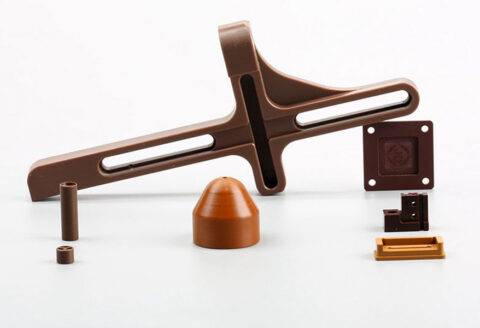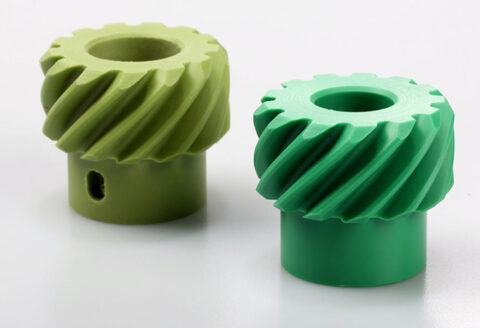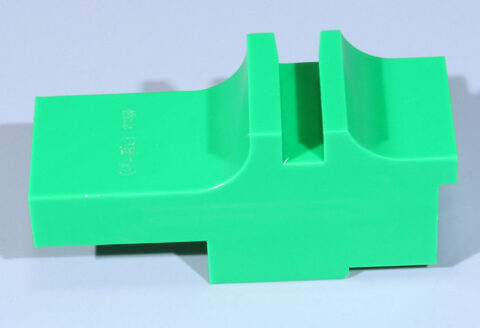The composition of the pouring system
Ordinary runner system, also called runner system, or pouring system, is the necessary passage for molten plastic from the nozzle of the injection machine to the mold cavity. The runner system includes main runners, runners, gates, etc.
Mainstream:Also called the main runner, sprue or down runner, it refers to the runner from the part where the nozzle of the injection machine is in contact with the main runner bushing of the mold to the runner. This part is the first part where the molten plastic flows through after entering the mold.
Diversion channel:Also called sub-runner or subrunner. With the mold design, it can be further divided into the first runner and the second runner. The runner is the transition area between the main runner and the gate, which can make the flow direction of the molten plastic be changed smoothly; for the multi-cavity mold, it also has the function of uniformly distributing the plastic to each cavity.
Gate:Also called the feed port, it is the narrow opening between the runner and the mold cavity, and it is also the shortest and thinner part. Its function is to use the shrinkage of the flow surface to accelerate the plastic. The high shear rate can make the plastic good fluidity (due to the shear thinning characteristics of the plastic); the heating effect of the viscous heating also increases the material temperature and reduces the viscosity. effect. After the molding is completed, the gate is the first to be cured and sealed to prevent the plastic from reflowing, and to prevent the pressure of the cavity from falling too fast, which causes the molded product to shrink and sink. After forming, it is convenient to cut off to separate the runner system and plastic parts.
Cold slug well:Also called cold slug. The purpose is to store and replenish the cold plastic wavefront at the initial stage of filling, to prevent the cold material from directly entering the mold cavity, affecting the filling quality or blocking the gate. The cold slug well is usually set at the end of the main runner. When the length of the branch runner is long, the cold slug well should also be set at the end.
The basic principles of gating system design
Consideration of cavity layout
- Try to use a balanced layout;
- The mold cavity layout and gate opening should be symmetrical to prevent uneven load caused by uneven force of the mold, and the problem of mold flashing;
- The layout of the mold cavity is as compact as possible to reduce the size of the mold.
Flow guidance considerations
- It can smoothly guide the molten plastic to fill the mold cavity, without eddy current, and can smoothly exhaust;
- Try to avoid frontal impact of plastic melt on cores and metal inserts with smaller diameters to prevent core displacement or deformation.
Consideration of heat loss and pressure drop
- The smaller the heat loss and pressure drop, the better;
- The process should be short;
- The cross-sectional area of the runner should be large enough;
- Try to avoid bending of the runner and sudden change of flow direction (change the direction at an arc angle);
- The surface roughness should be low when the runner is processed;
- Multi-point pouring can reduce the pressure drop and the required injection pressure, but there will be suture problems.
Consideration of flow balance
- When one mold is filled with multiple cavities, the runner should be balanced, and try to make the plastic fill each cavity at the same time to ensure the quality consistency of the molded products of each cavity;
- As far as possible, the branch runner should adopt a natural balanced layout;
- When the natural balance is not possible, the artificial balance method is used to balance the flow channel.
Scrap considerations
On the premise of smooth filling without affecting the flow and pressure loss, reduce the flow channel volume (length or cross-sectional area) to reduce the flow channel waste generation and recycling costs.
Cold material considerations
Appropriate cold material wells and overflow tanks are designed on the runner system to supplement the colder plastic wave front in the initial stage of filling and prevent the cold material from directly entering the mold cavity and affecting the filling quality.
Exhaust considerationsThe plastic should be smoothly guided to fill the mold cavity and allow the air in the mold cavity to escape smoothly to avoid the problem of scorching of the encapsulation.
Consideration of the quality of molded products
- Avoid short shots, burrs, encapsulation, suture lines, flow marks, jets, residual stress, warpage deformation, mold core deviation and other problems;
- When the runner system has a long process or multi-point pouring, the warpage and deformation of the finished product caused by unbalanced flow, insufficient pressure or uneven shrinkage should be prevented;
- The appearance of the product is good, it is convenient to remove and trim the gate, and the gate mark does not damage the appearance and application of the plastic part.
Consideration of production efficiencyMinimize the required post-processing, shorten the forming cycle and improve production efficiency.
Consideration of ejection pointIt is necessary to consider the proper ejection position to avoid the deformation of the molded product.
Considerations for using plasticFor plastics with higher viscosity or shorter L/t, avoid using too long or too small runners


